Eggbot
Here is Robot Roundup episode two, where I documunt building a robot out of a plastic Easter egg.
Here is Robot Roundup episode two, where I documunt building a robot out of a plastic Easter egg.
I started a YouTube channel for videos of my robot model builds. Here is episode one.
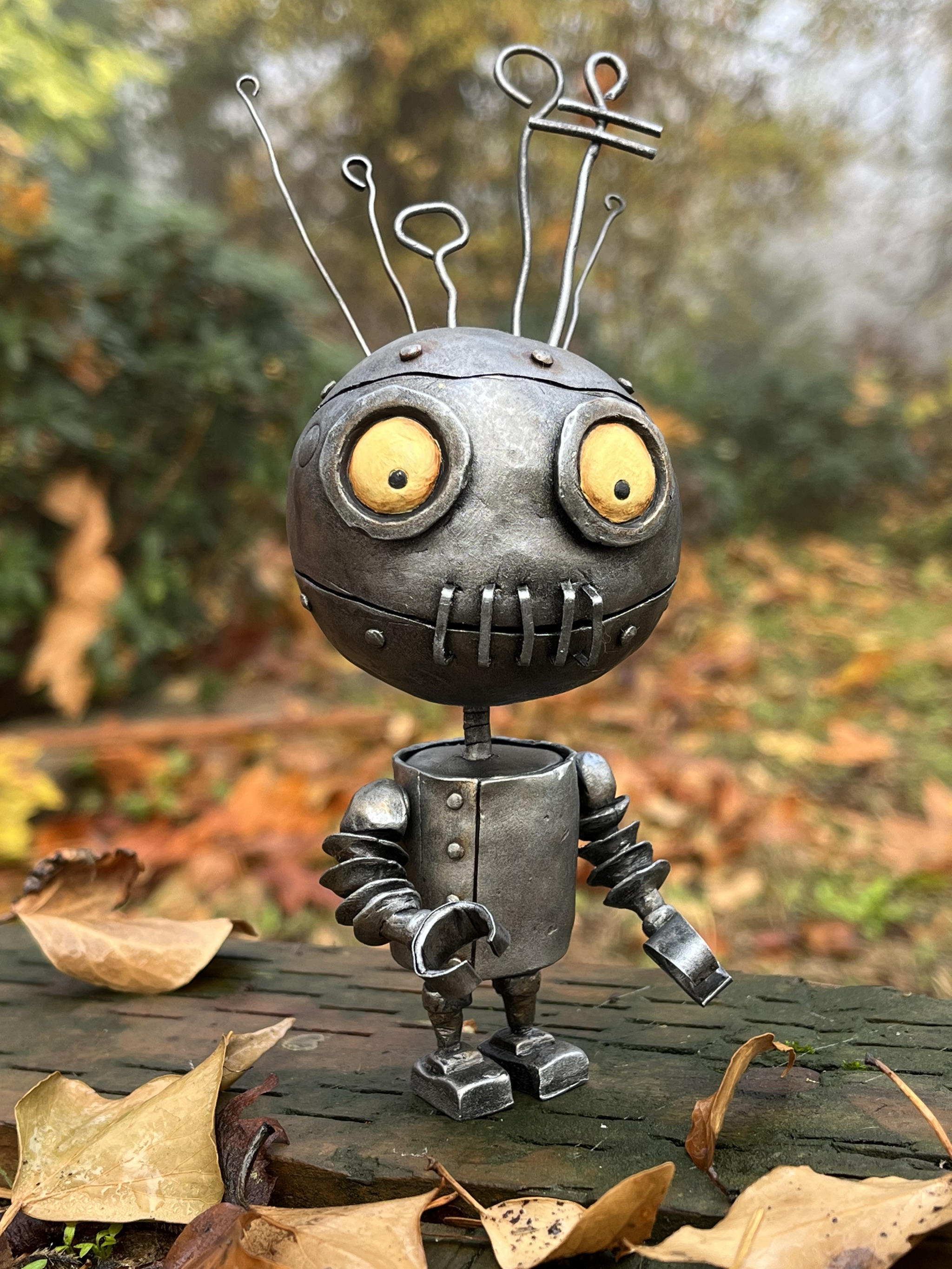
I love watching Tim Burton movies during October. The machinery in the cookie factory scenes in Edward Scissorhands made me curious to see what a Tim Burton style robot would look like. Then I found that he actually designed some robot characters. My character is largely based on those designs.
He’s made mostly out of polymer clay over an aluminum foil base. I used various types of wire for his antennae as well as thick staples for his mouth grill.
I’d like to make a Tin Woodman similar to this.
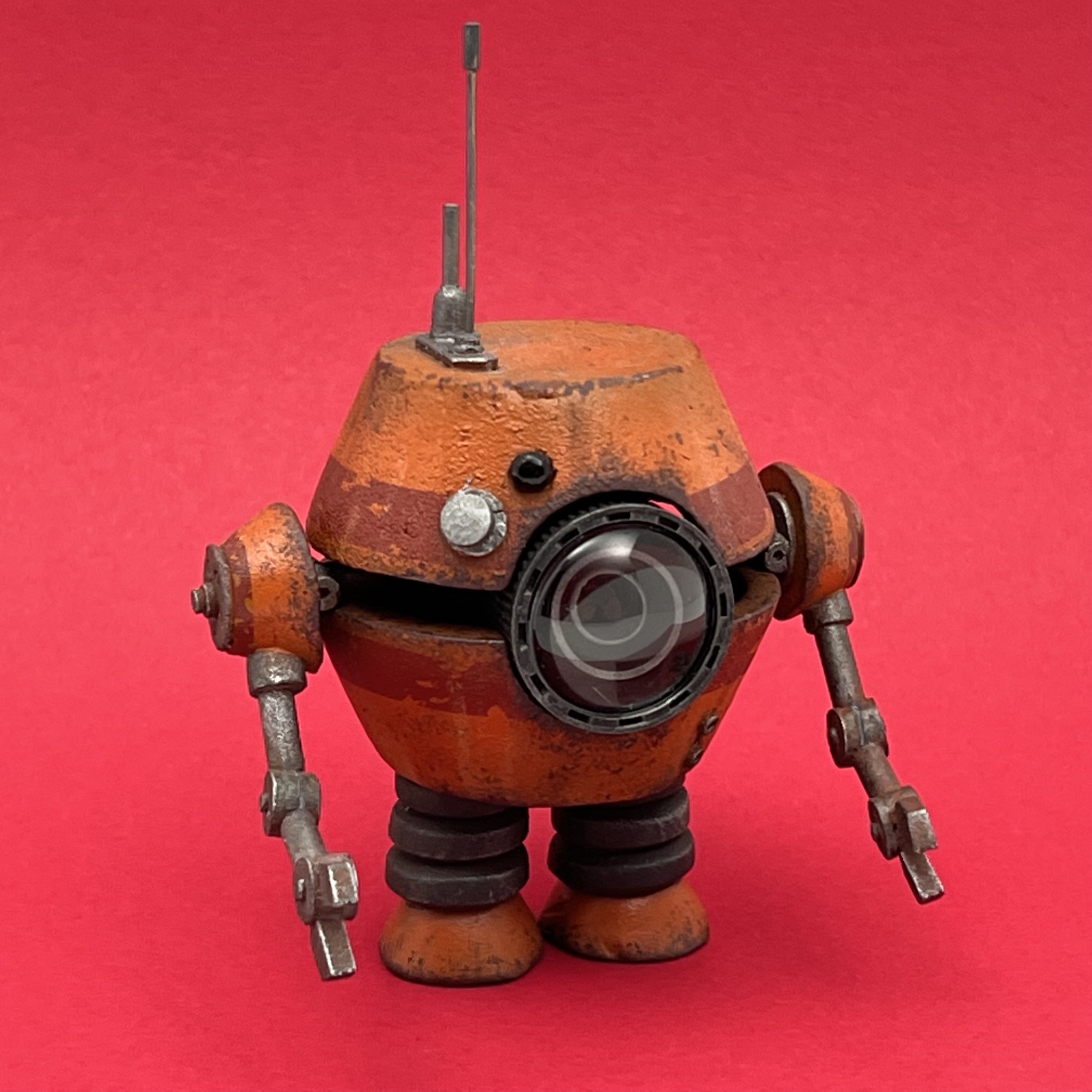
Another robot model I completed last year. I was going for more of a Star Wars aesthetic with this one, sort of inspired by Gonk droids.
Except for the eye, he’s made entirely out of Super Sculpey. I created a cardboard mold for the shape that forms the two body halves so that they would be the same. After the body halves were baked, I used a Dremel to hollow them out and carve the hole for the eye.
The eye was made with a bottle cap lid, the lens is a clear glass cabochon. I bought a pack of them in various sizes. I’m hoping to find more uses for them.
If I were to build a similar one, I wouldn’t use Sculpey for the arms as they seem a little brittle. I’m sure they would break if he were to fall over. Luckily he’s pretty stout.
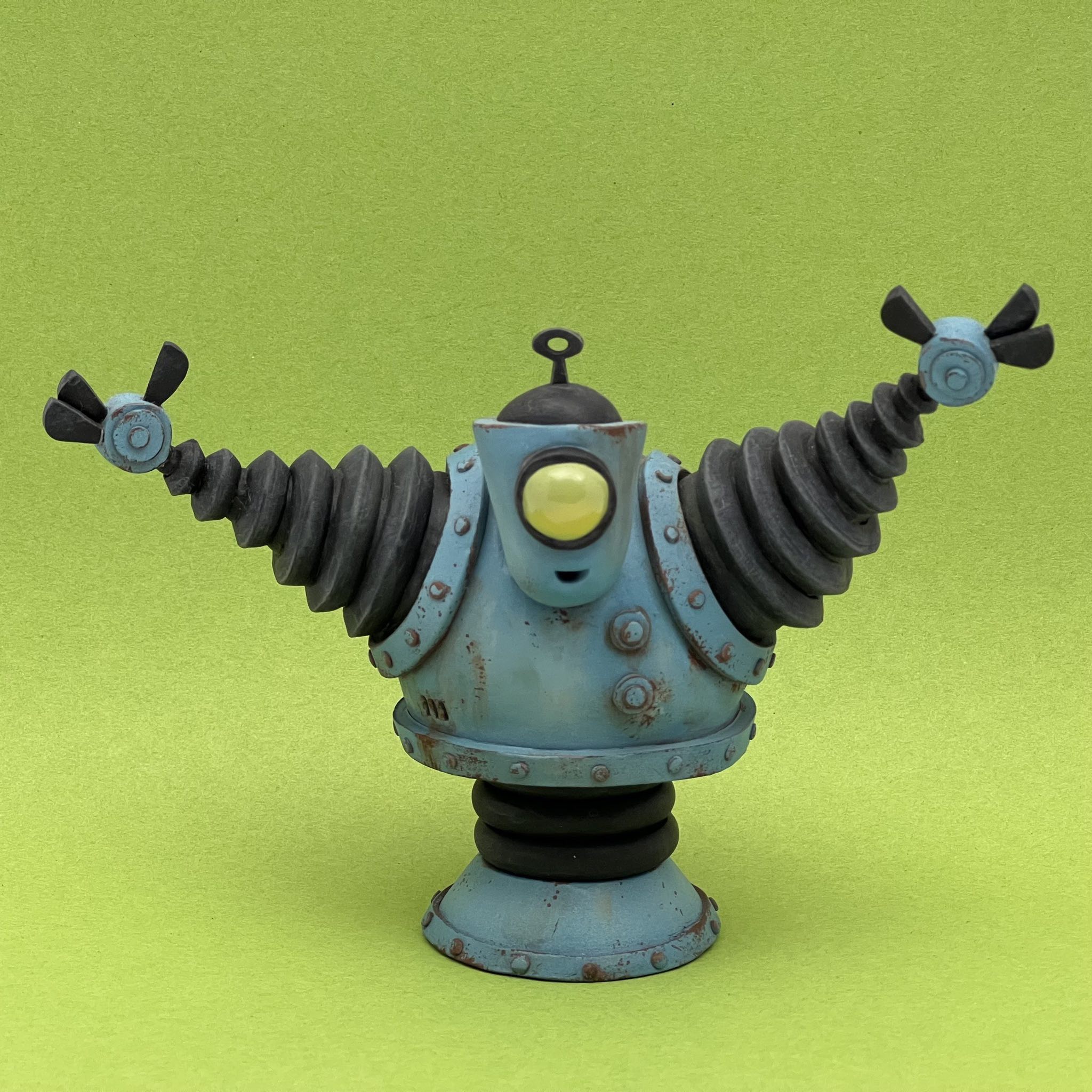
I made an art toy sculpture of Hugbot, one of my Robot Roundup characters.
Similar to how I made Junkbot, I printed a vector drawing of the character at the size I wanted the sculpture, which I then used as a schematic.
With this blueprint, I made a simple armature with twisted wire for his arms and torso, and built it up with layers of aluminum foil.
With my clay extruder, I was able to coat the armature with thin strips of Super Scupley. I also used extruded pieces for the trim around his shoulders and torso, as well as the triangular baffles around his arms. All the rivets were sliced from a thin clay noodle.
I airbrushed his body first with a rusty orange. Then I used a paint chipping technique where you then spay a layer of hairspray over the base color, followed the final body color. Using a stiff, wet brush, you then scrub around the areas where you want the base rust to show, and the hairspray, when wet, will loosen and the top paint layer will start to come off. This creates a the effect of the top layer of paint peeling off in places.
Then I used thin washes of oil paint to add grease and rust streaks.
Who’s ready for some hugs?

I made an art toy scupture of Junkbot, one of my Robot Roundup characters.
I started by printing out the vector drawing of the character at the size I wanted the sculpture. I used this as a schematic so that I could measure his proportions against the print out.
Except for some screws in his arms, legs, and neck, he’s made entirely from polymer clay, even his inner wires. Using a clay extruder tool, I made a bunch of “noodles” that I used to coat his insides with a messy nest of wires. I then made some thicker ribbed tubing by twisting a noodle around a thin wire.
After the clay was cured, I coated him with thinned modeling putty, dabbed on with an old paint brush. This added a kind of cast iron texture.
I airbrushed him with various rust and orange colors and then used thin washes of oil paint to add grease and rust streaks.
I tried a bit of a different style with this digital painting.
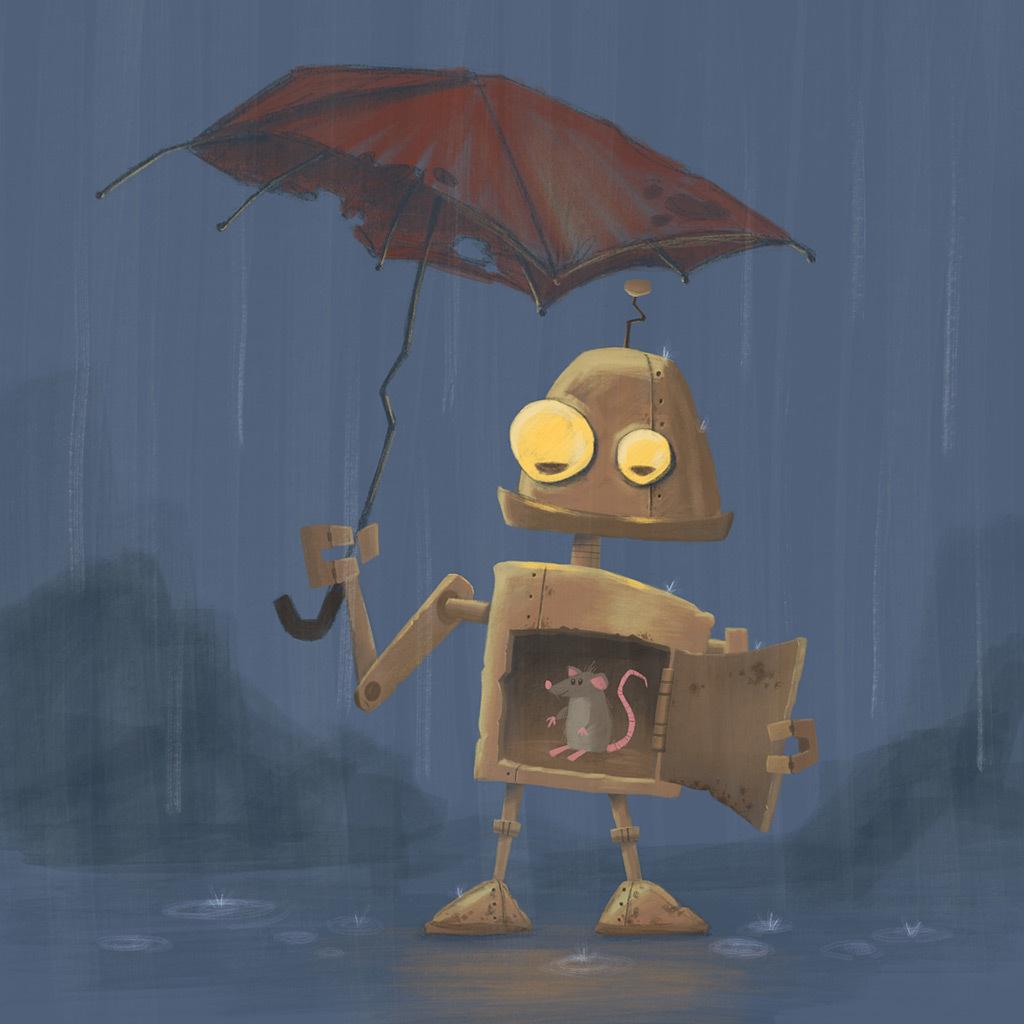
This is a character that’s been with me for quite a while now. I call him “Bindlebot”. He’s the first robot I painted after deciding to put more effort into illustration, and I’ve done a few versions of him since then. It makes me happy to know that he’s always out there on his adventure. He’s the logo for Robot Roundup as well as Rainbot for the letter R.
Robot Roundup is the name for my series of robot ABC characters. It’s nearing completion, I can’t wait to share them with you!
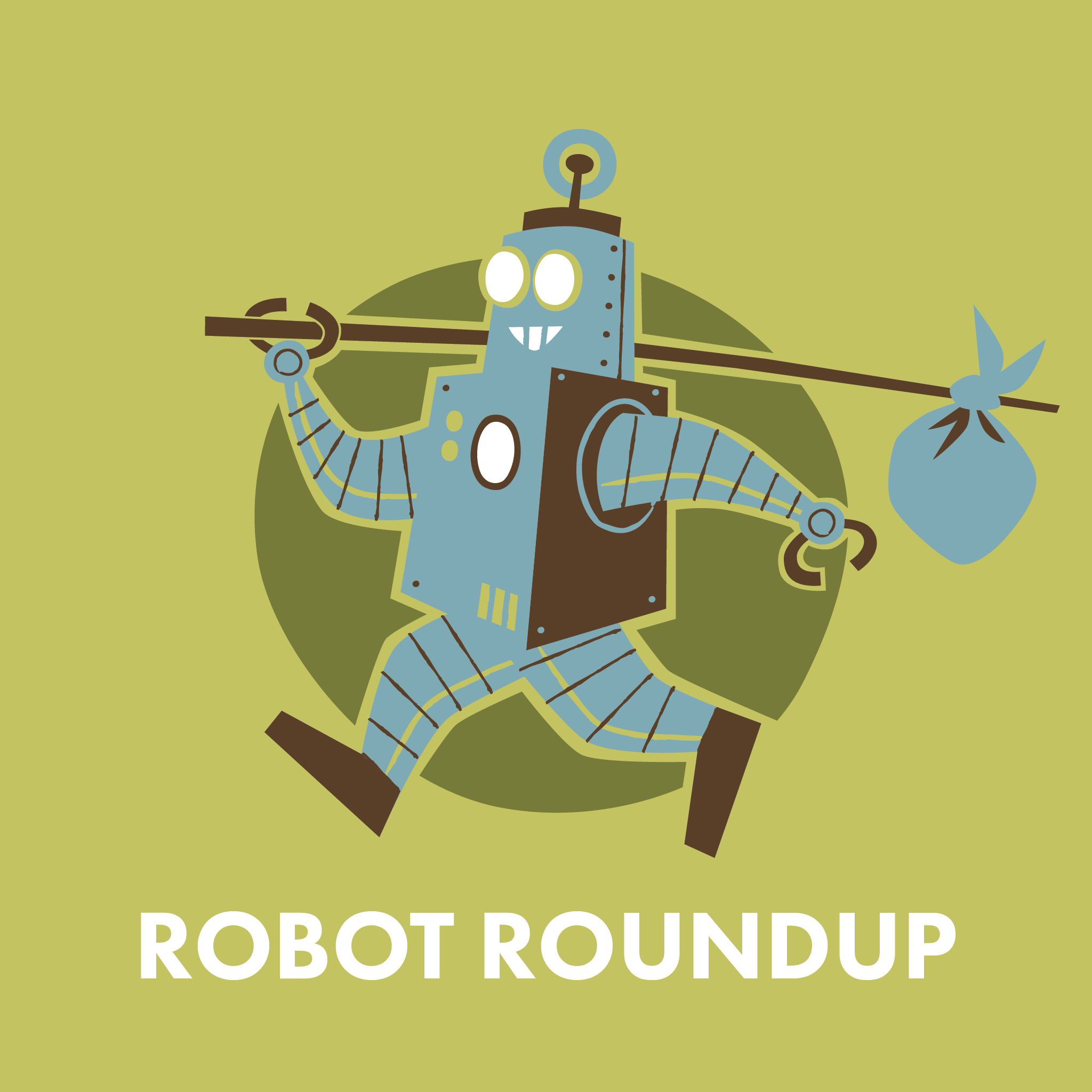
My new book Monsters vs. Robots is out now! Available as an eBook on the Apple iBooks and Amazon Kindle stores. Two years in the making, I’m really happy with how it turned out.
It’s available in these formats:
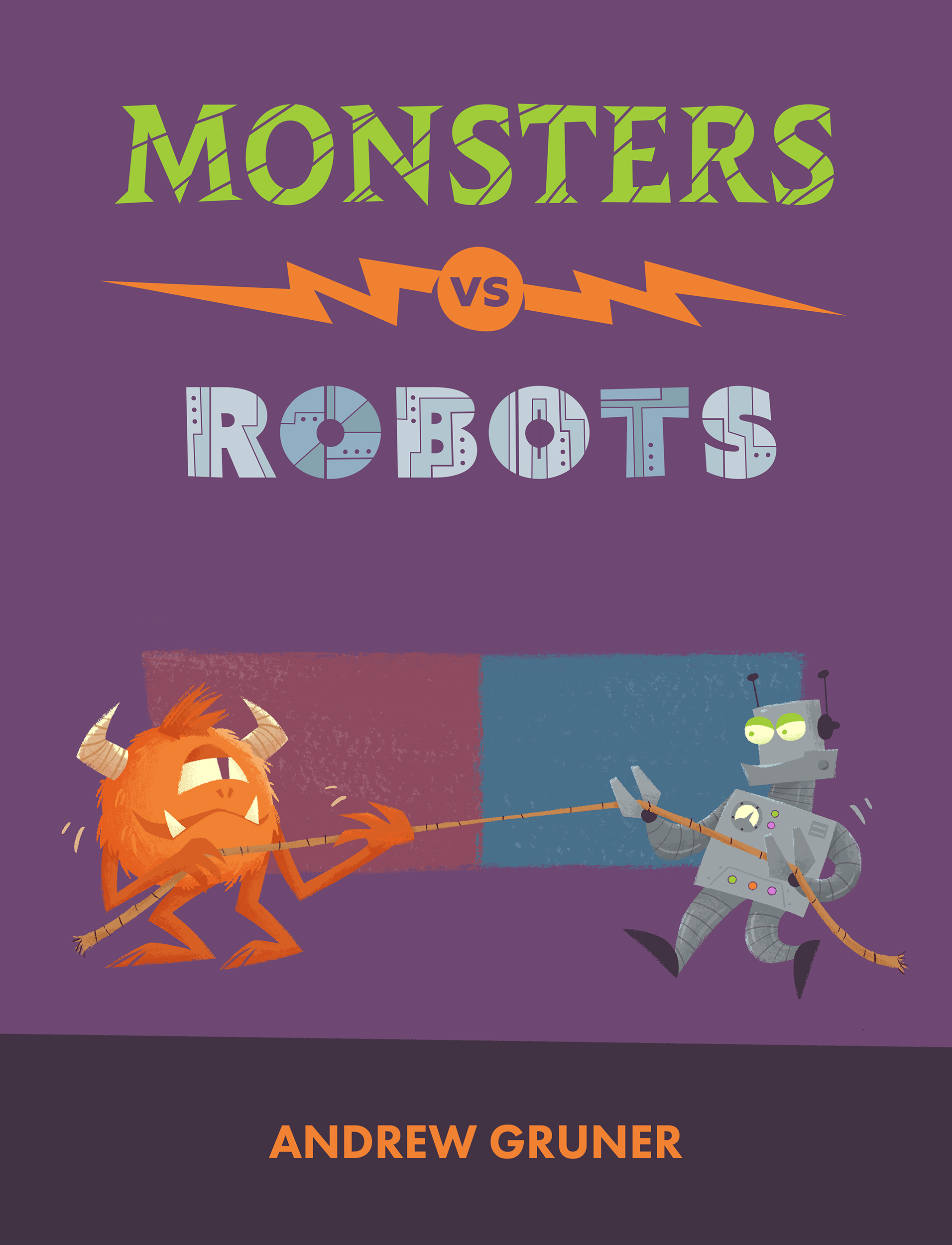
A while back I had the idea of trying to program a faux Facebook game about a robot on a journey. The “game” would do nothing except send random status messages to the user’s timeline about what their robot character was doing like, “Andrew’s robot completed the Sar Chasm mission” or, “Andrew’s robot solved the mystery of the abandoned Moon Mine”. A player would do nothing except sign up and their robot would be off on its mystical journey, sending you dispatches along the way. Your robot would complete missions, earn badges and mayorships, and other goodness. I thought it would be fun to create, in addition to poking fun at pointless Facebook games. (Fortunately Cow Clicker did a much better job at this kind of satire.)
I started thinking about what kind of website I would design for the game sign-up and figured it would feature large rotating illustrations of robots in different environments. After a few doodles I decided to see what it would be like to actually paint one rather than doing it in Illustrator or Photoshop. I was fairly pleased with how it turned out and it was really fun. I decided that doing similar works would be a bit more worthwhile than spending time developing a fake game.
In the process I began exploring the idea of creating characters and an environment that suggests a larger narrative, making images that look like they belong in a storybook. Or creating a scene that makes you wonder “what’s going on here” in a way that’s not just surrealist juxtapositions.
It’s also an artistic principle that any kind of image with another person in it is instantly more engaging than one without. And robots, being simple geometric forms, are much easier to draw than people, but you get some of the same instant engagement & empathy for free, especially by showing them doing human activities.
Just beware of the uncanny valley.